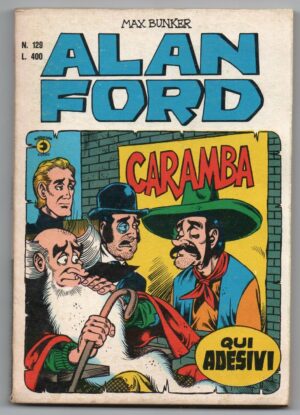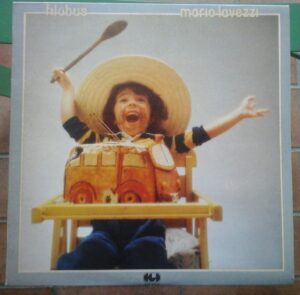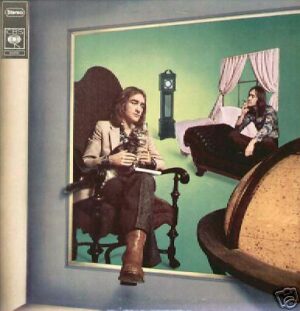Descrizione
PREMESSA: LA SUPERIORITA’ DELLA MUSICA SU VINILE E’ ANCOR OGGI SANCITA, NOTORIA ED EVIDENTE. NON TANTO DA UN PUNTO DI VISTA DI RESA, QUALITA’ E PULIZIA DEL SUONO, TANTOMENO DA QUELLO DEL RIMPIANTO RETROSPETTIVO E NOSTALGICO , MA SOPRATTUTTO DA QUELLO PIU’ PALPABILE ED INOPPUGNABILE DELL’ ESSENZA, DELL’ ANIMA E DELLA SUBLIMAZIONE CREATIVA. IL DISCO IN VINILE HA PULSAZIONE ARTISTICA, PASSIONE ARMONICA E SPLENDORE GRAFICO , E’ PIACEVOLE DA OSSERVARE E DA TENERE IN MANO, RISPLENDE, PROFUMA E VIBRA DI VITA, DI EMOZIONE E DI SENSIBILITA’. E’ TUTTO QUELLO CHE NON E’ E NON POTRA’ MAI ESSERE IL CD, CHE AL CONTRARIO E’ SOLO UN OGGETTO MERAMENTE COMMERCIALE, POVERO, ARIDO, CINICO, STERILE ED ORWELLIANO, UNA DEGENERAZIONE INDUSTRIALE SCHIZOFRENICA E NECROFILA, LA DESOLANTE SOLUZIONE FINALE DELL’ AVIDITA’ DEL MERCATO E DELL’ ARROGANZA DEI DISCOGRAFICI .
BARRY McGUIRE
BRMcGR perché ? perchè si !
Disco LP 33 giri , 1967, rca victor, SIV 11 , italia
ECCELLENTI CONDIZIONI, vinyl ex++/NM , cover ex++
Barry
McGuire, cantante americano di un certo successo alla fine degli anni ’60 e
protagonista di una storia curiosa, membro da ragazzo e da giovanotto di un
gruppo vocale conuntry-folk-gospel di tendenze più che edificanti, i “New
Christy Minstrels“, divenuti famosi anche in Italia
semplicemente come “Minstrels”, avendo partecipato ad un paio di
festival di San Remo in coppia con Wilma Goich, Bobby Solo e altri (nel 1965
vinsero anche la competizione canora, assieme appunto a Bobby Solo). Barry nei
Minstrels era uno dei front-man, uno dei belli del gruppo, quello dalla voce
profonda e soprattutto il co-autore con il fondatore Sparks, nonché cantante
solista, del loro primo grande successo “Green,
Green“, numero 3 nella classifica USA nei primi anni ’60.
Poi crescendo (e cambiando il mondo attorno, si
preparava il ’68) la ribellione: il biondo ragazzo per bene si fece crescere i
capelli, indossò stivali e pantaloni attillati, giacconi di pelle e cominciò a
cantare le canzoni di Bob Dylan, e canzoni di “protesta” come
Eve Of Destruction
o ” Ain’t No Way I’m Gonna Change My
Mind”, tutte composizioni di un autore allora di spicco nel panorama
folk-rock, P.F. Sloan,
con un vocione arrabbiato, arrivando anche ad un grande successo internazionale
anche con You Were In My Mind, tradotta e portata al successo in Italia
dall’Equipe 84 con il titolo Io ho
in mente te. Ebbe anche lui un certo successo in Italia dove venne pubblicata
una specie di antologia con molti brani dal suo album di maggiore successo,
Eve
of Destruction, (ma senza questo brano), dal curioso titolo
BRMCGR. Perché? Perché Sì!.
Dopo questa stagione felice ha continuato una carriera più appartata di
cantante folk e al momento è molto impegnato nella assistenza alla infanzia nel
terzo mondo.
Barry Eugene McGuire (Oklahoma City, 15 ottobre 1935) è un cantante e cantautore statunitense.
Dopo aver pubblicato un singolo nel 1961 The Tree, Barry McGuire forma un duo con Barry Kane, che diventeranno i New Christy Minstrels nel 1962. Barry McGuirre con i New Christy Minstrels si esibì al festival di San
Remo in coppia con Bobby Solo nel ’65 cantando Se piangi se ridi che
vinse l’edizione dell’anno.Tuttavia nello stesso anno dopo aver registrato l’album Chim Chim Cher-ee, McGuire lascia il gruppo e prosegue la propria carriera come solista.
Come solista di rock–folk degli anni sessanta, McGuire diventa popolare principalmente per i brani Eve of Destruction e Sins of the Family, entrambi scritti da P.F. Sloan. Altri suoi successi sono stati Child of Our Times, scritto insieme a Steve Barri e Cloudy Afternoon (Raindrops), composto da Travis Edmonson. Eve of Destruction il 25 settembre 1965 arrivò alla prima posizione della Billboard Hot 100, la prima e l’unica volta che McGuire entrò nella top 40 pop statunitense.
McGuire è apparso nei film del 1967 The President’s Analyst con James Coburn, Old Wrangle, ed in Werewolves on Wheels nel 1971. McGuire ha anche preso parte per un anno al musical di Broadway Hair (musical).
Dagli anni settanta ha abbracciato la religione cristiana, aderendo al movimento musicale del christian rock e pubblicando alcuni album per la Myrrh Records, che lascerà nel 1976. Gli album successivi della carriera di McGuire saranno pubblicati dalla Sparrow Records, anche se nel 1980 deciderà di ritirarsi dall’industria discografica e ritirarsi a vita privata in Nuova Zelanda.
Negli anni novanta Barry McGuire tornerà negli Stati Uniti, e si unirà con Terry Talbot per registrare con il nome collettivo Talbot McGuire. Il duo ha rilasciato quattro album dal 1996 al 2000. Nel 2008 McGuire girerà l’America in tour, insieme al collega John York.
- Interprete: Barry Mc Guire
- Etichetta: Rca Victor
- Catalogo: SIV 11
- Data di pubblicazione: 1967
- Matrici: SKAP 13460 1 S – 1 A / SKAP 13460 1 S – 2 A
- Supporto:vinile 33 giri
- Tipo audio: mono
- Dimensioni: 30 cm.
- Facciate: 2
- Laminated front cover / copertina frontale laminata, black label , original company inner sleeve
Track listingSide one
Side two
|
| Eve of Destruction |
|
Lou Adler was a man who knew the music business inside and out. He Barry signed with Dunhill in May, 1965, and started recording with It turns out that a photographer and record promoter by the name In the first week of its release, “Eve” was at #30 in the Cash Box
The media headlined the song as everything that is wrong with the On top of all this, there was flack from both conservatives and There were some exceptions to the ill treatment “Eve” received. |
| THE MINSTRELS
Nelle |
McGuire was born in Oklahoma City, Oklahoma, and moved to California in early childhood. At age 16 he joined the United States Navy, but was discharged ten months later for being ‘under age’.
After working as a commercial fisherman, and then going onto become
a journeyman pipe fitter, at age 25 McGuire got a job singing in a bar.
In 1961, he released his first single called “The Tree”, which was not a hit, and formed a duo with Barry Kane. They both joined the New Christy Minstrels
in Spring 1962. In 1963, McGuire along with Randy Sparks (the founder
of the New Christy Minstrels) co-wrote the Christys’ first and biggest
hit single: “Green, Green.” He left the Christys in January, 1965,
after recording the album, Cowboys and Indians; however, on the 1965 album Chim Chim Cher-ee, he sang only on the title cut.
Solo career
As a folk rock solo singer in the 1960s, he was best known for his hits “Eve of Destruction” and “Sins of the Family”, both written by P.F. Sloan. His other chart successes, “Child of Our Times” was co-written by Steve Barri, and “Cloudy Summer Afternoon (Raindrops)” was penned by Travis Edmonson of 1960’s folk-duo, Bud & Travis.
McGuire’s LP, The Eve of Destruction, reached its peak of #37 on the Billboard Hot 200 chart
during the week ending 25 September 1965. That same day the single of
that name went to #1 on both charts. McGuire was never again to break
into the Top 40 of the Billboard Hot 100.
According to McGuire, “Eve of Destruction” was recorded in one take on
a Thursday morning (from words scrawled on a crumpled piece of paper)
and then he got a call from the record company at 7:00 the next Monday
morning, telling him to turn on the radio – his song was playing. The
recording includes an “ahhh” where McGuire couldn’t read the words. The Temptations referenced McGuire’s song “Eve of Destruction” in their song “Ball of Confusion (That’s What the World Is Today)“. For other references and covers of “Eve of Destruction” see the article: “Eve of Destruction“.
The album This Precious Time was released in 1966, his second with Dunhill Records. It includes a version of “California Dreamin’” with The Mamas and the Papas singing backing vocals. McGuire is mentioned several times in The Mamas & the Papas hit, “Creeque Alley“. Frank Zappa wrote McGuire’s name in the sleeve of his Freak Out album (1966) as one of his musical influences.
McGuire appeared in the 1967 movie, The President’s Analyst with James Coburn as the character, “Old Wrangler,” and in Werewolves on Wheels in 1971. He also starred for a year in the Broadway musical Hair.
McGuire became a born-again Christian in 1971 after a brief encounter with evangelist Arthur Blessitt in October 1970. In 1973, he joined the Myrrh label and released the album Seeds. This album is also notable for the backing vocals provided by the family trio that would become known as the 2nd Chapter of Acts. In 1974, McGuire released his second Jesus Music album Lighten Up, which included a remake of “Eve of Destruction”. He toured with 2nd Chapter of Acts and “a band called David” and in 1975 this collaborative effort resulted in the double live album, To the Bride.
In 1976, he left Myrrh, joining former Myrrh executive Billy Ray Hearn’s new label, Sparrow Records. He recorded seven albums on Sparrow, the best known of which is Cosmic Cowboy, released in 1978. That year he also released a top-selling children’s album Bullfrogs and Butterflies (part of the Agapeland series) for Sparrow’s subsidiary label, Birdwing.
In 1978, he also toured England, Scotland, and Wales with the Jimmy
Owens’ musical “The Witness”, in which he played the part of the
apostle Peter. His acting and singing in the musical was considered
very inspiring. Also, the voice of Peter on the “Witness” album is his.
Later life
In the 1980s, McGuire left the music industry, and settled for a time in New Zealand with his New Zealander wife, Mari (former secretary of McGuire’s Agape Force associate, Winkie Pratney). He returned to the United States in the 1990s, teaming up with Terry Talbot and recording as Talbot McGuire. The duo released four albums between 1996 and 2000.
As of 2006, he takes engagements which include a few songs and talks
on a mixture of topics, by both McGuire and his wife. The McGuires
resided in Fresno, California on their return to the United states but have since moved back to New Zealand.
On March 12, 2008, McGuire appeared on the Australian music comedy/game show Spicks and Specks, performing an updated version of Eve of Destruction,
with new lines such as, “You’re old enough to kill/ you just started
voting” and “… can live for ten years in space”. The reference to
“Red China” was also removed.
In 2008, McGuire teamed up with former member of The Byrds
John York for a live tour called “Trippin’ the ’60s”, which McGuire
describes as “…taking the songs and the truth that was in those songs
from the 60’s and bringing them into the present moment…It’s not a
cover pack, it’s us singing songs that we sung with a lot of our
friends that aren’t around anymore to sing them.”



 After
After Trousdale
Trousdale 25th,
25th, Then
Then

